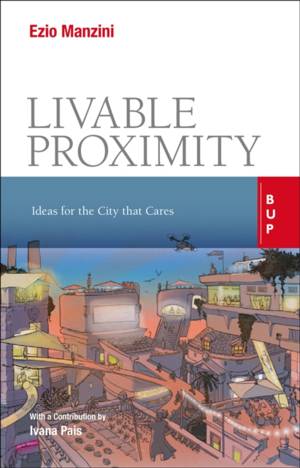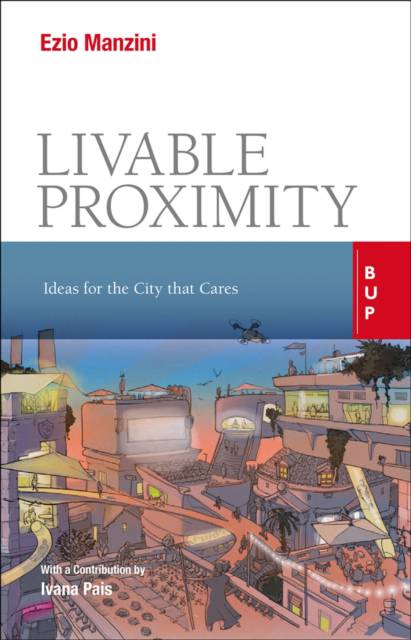
- Afhalen na 1 uur in een winkel met voorraad
- Gratis thuislevering in België vanaf € 30
- Ruim aanbod met 7 miljoen producten
- Afhalen na 1 uur in een winkel met voorraad
- Gratis thuislevering in België vanaf € 30
- Ruim aanbod met 7 miljoen producten
Zoeken
Omschrijving
"Livable Proximity is a passionate and compelling call for a remaking of the city under a novel paradigm of relationality and care by one of the most accomplished design thinkers of our time." - ARTURO ESCOBAR This book is a contribution to the social conversation on the city and its future. It focuses on an idea that has been in circulation for some time and that, in recent years, has received greater attention: that of a city in which everything that is needed for daily life is just a few minutes away by foot from where people live. In addition, it speaks of a city in which this functional proximity corresponds to a relational proximity, thanks to which people have more opportunities to encounter each other, support each other, care for each other and the environment, and collaborate to reach goals together. Ultimately, it is a city built starting from the life of the citizens and an idea of livable proximity in which they can fi nd what they need to live, and to do so together with others. The underlying theme that this book poses is thus the following: can we construct the contemporary city starting from a new idea of proximity? The response given is yes, it can be done. The social innovations of the last 20 years in fact indicate where to start. Many cities in the world, including Paris, Barcelona, and Milan have made a commitment and are taking steps in this direction, offering concrete examples of what this city of proximity could be: a city in which social innovation, care, common goods, communities of place, and enabling digital platforms become the keywords of a new and widespread social capacity to design.
Specificaties
Betrokkenen
- Auteur(s):
- Uitgeverij:
Inhoud
- Aantal bladzijden:
- 172
- Taal:
- Engels
Eigenschappen
- Productcode (EAN):
- 9788831322386
- Verschijningsdatum:
- 3/01/2022
- Uitvoering:
- Paperback
- Formaat:
- Trade paperback (VS)
- Afmetingen:
- 150 mm x 234 mm
- Gewicht:
- 294 g

Alleen bij Standaard Boekhandel
+ 83 punten op je klantenkaart van Standaard Boekhandel
Beoordelingen
We publiceren alleen reviews die voldoen aan de voorwaarden voor reviews. Bekijk onze voorwaarden voor reviews.











